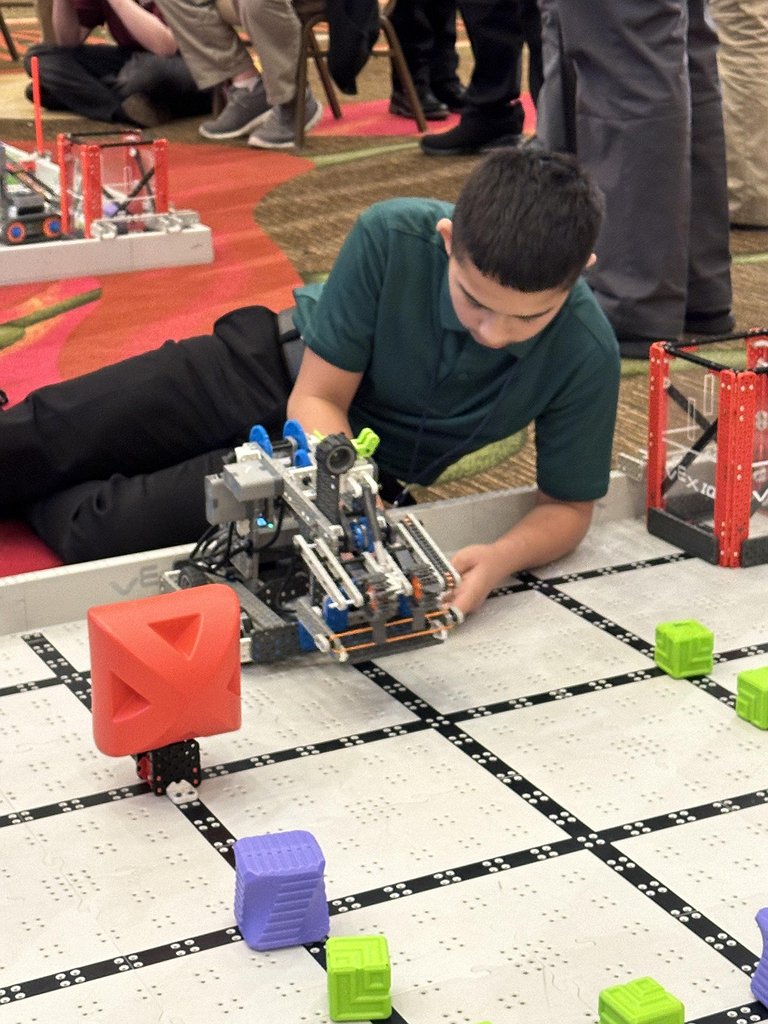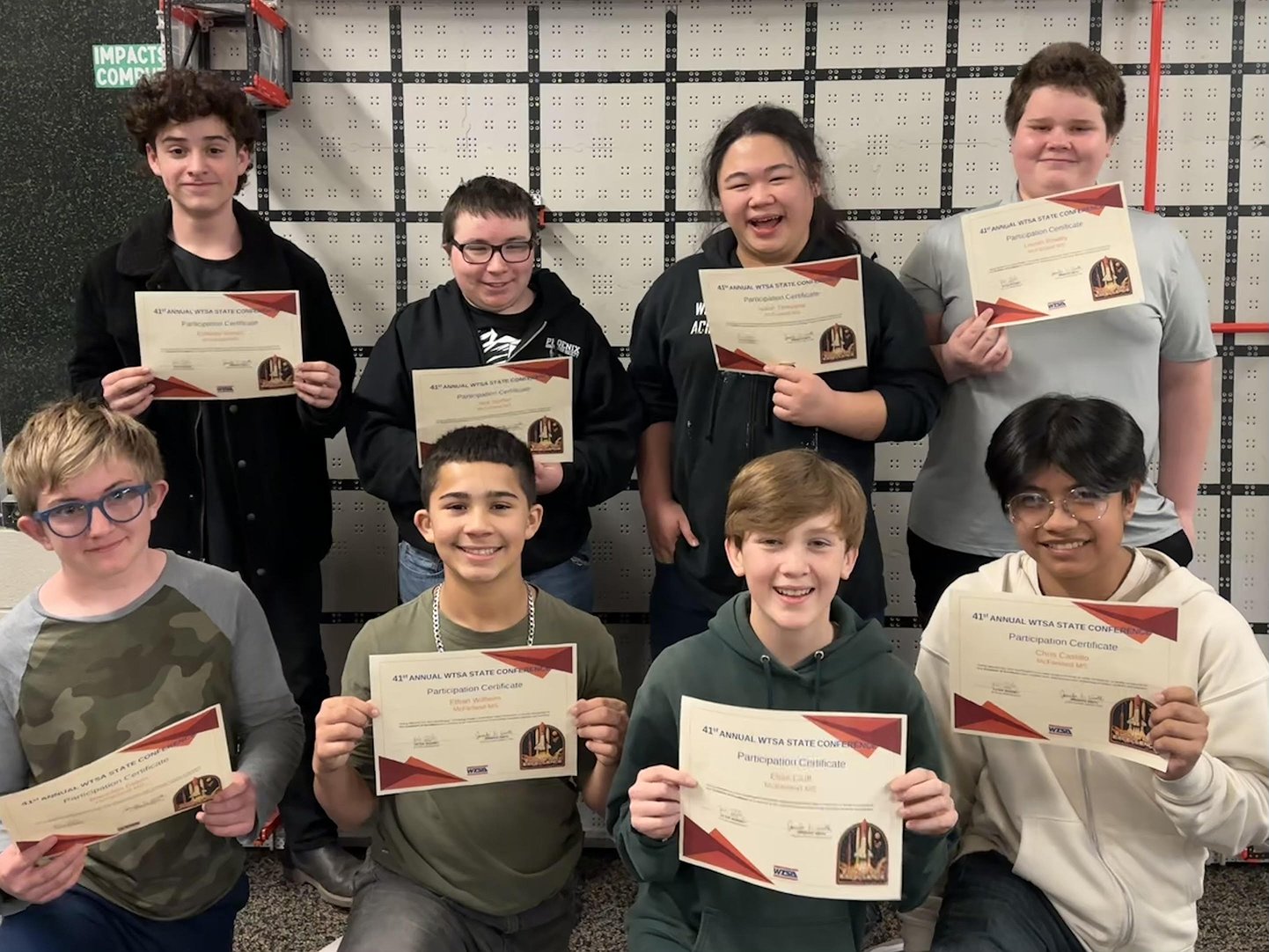McFarland students make Technology Student Assn. nationals, need funding
GABRIEL DAVIS | Hagadone News Network | UPDATED 1 year, 8 months AGO
Gabriel Davis is a resident of Othello who enjoys the connections with his sources. Davis is a graduate of Northwest Nazarene University where he studied English and creative writing. During his free time, he enjoys reading, TV, movies and games – anything with a good story, though he has a preference for science fiction and crime. He covers the communities on the south end of Grant County and in Adams County. | April 22, 2024 1:55 AM
OTHELLO — Othello students in McFarland Middle School’s Technology Student Association, an ASB club focused on technology skills, qualified for the TSA national competition in Orlando, Fla., after the state conference in March.
Now they just need the funds to get there.
McFarland Middle School Career and Technical Education Teacher Devan Lewis oversees the club.
“Unfortunately, our district just doesn't have the capacity right now to cover (the trip), because we’re an ASB club, so ASB would pay for it,” Lewis said. “Our ASB, they just don't have the funds.”
The state conference, which ran from March 13 to March 16, featured competitions in numerous technology-related subjects. McFarland students in the school’s new TSA club participated in five different categories, including the VEX IQ robotics competition, trebuchet competition, children’s stories, problem-solving and cybersecurity.
McFarland teams placed 4th and 6th in the VEX IQ category, with Wahluke Junior High teams taking the first three places. Lewis said the TSA national competition only allows a maximum of two teams to compete per school, meaning McFarland can send a team as a 4th place winner, with a minimum of two students needed for the team to compete.
Jackie Wilhelm, a parent of one of the students in the club, said the estimated total cost of the trip is about $3,000 for each student. With five students interested in going, Wilhlem said the club will need about $15,000 to take the students.
Whatever the group can fundraise together will be distributed evenly between the students, and the students’ families will have to make up the difference, Wilhelm said. The registration deadline for the national competition is the end of the month.
“We're going host a mother and child ball at the end of this month to kind of help raise enough funds to send however many kids are able to go,” she said. “But we understand as parents, we still have to come up with a large portion of it in order to make it happen.”
The mother and child ball will be held April 26 from 6:30 to 8:30 p.m. in the MMS gym. Wilhelm said the $40 entrance fee proceeds will go directly to the TSA club. Wilhelm also set up a GoFundMe page for people to donate directly.
“I want to just keep them encouraged. I don't want them to be like, ‘Well, the school can't pay for it, so I guess State is where it stops for me,’” she said. “I want to be able to make every opportunity available to them.”
Lewis said the TSA club began preparing for the competition as soon as the school year started.
“They started back in September, building a robot that they thought would work for the competition,” Lewis said. “Since this is our first year, it was kind of like a trial-by-fire kind of activity. We just wanted to go and see what it was like, and they did really well.”
The VEX IQ competition pitted McFarland’s robot against other schools’ competitors.
“They have two different types of competition. One is a driver competition, so their driving skills, how can they manage their robot. They pick up the different size blocks and different blocks have different point values, and they have to put them in little bins,” Lewis said. “Then they also have an automated (section), so their actual coding skills, where they have to put the robot in a specific spot and code it to go and do that same work.”
Lewis said TSA helps the students develop technical skills, but also provides a fun avenue for travel, building friendships, leadership skills and personal growth.
“One thing I love about TSA is it really fosters that ‘look at the process, even more so than the actual final product’ (idea),” she said. “(The students) were like, our robot is not Nationals quality … Even before they knew they got to go to Nationals, they were like, ‘We want to redesign this robot.’ So they've been continuing to work on their robot and redesigning parts of it to make it more efficient based on what they saw from other kids at State.”
Wilhelm said she is hoping to help set up a booster club for the students so they can begin fundraising for next year’s competition much earlier.
Gabriel Davis may be reached at [email protected].
Want to help?
To donate to the McFarland TSA’ GoFundMe and help students get to the competition, visit gofund.me/cec480fd.
ARTICLES BY GABRIEL DAVIS

Work-based learning lets students build their own futures
MOSES LAKE — Work-based learning provides education opportunities for the workforce to receive hands-on training and technical education and prepare themselves to enter various industries. Educators and workforce development professionals from Eastern Washington discussed some the training they offer and the benefits of their programs. Next Generation Zone, an affiliate of WorkSource based in Spokane, provides job training opportunities for youth and young adults ages 16 to 24. Program Coordinator Kate Martin said there are multiple benefits to the program. “One of them is a paid work experience, and that’s where we reach out to area employers who are willing to take a young person and train them,” she said. “This is a short-term learning experience, so it’s typically about 240 hours; sometimes it could be longer or shorter. We’re the actual employer; we cover all of their wages, taxes, the L&I, and the employer just agrees to give them the experience and train them in whatever field it is that they’re wanting to go into.”

Serving schools: ESD superintendents reflect on operations, priorities
MOSES LAKE — Educational service districts are government-mandated agencies put in place to provide services to school districts across the state. ESD Superintendents discussed what they do and their priorities in operating their districts. ESD 105, led by Superintendent Kevin Chase, serves four counties, including Kittitas, Yakima and portions of Klickitat and Grant counties and provides support for 25 school districts – including Royal School District and Wahluke School District – and more than 66,000 students. “We help them collaborate with each other as well or collaborate with other partners,” Chase said. “(It’s) a lot of advocacy work, either regionally or across the state, or even federally, working on different issues that impact our education. And we provide very specialized services in certain situations in order to meet the needs of our students in our region and of our school districts.”

Columbia Basin Project making headway through Odessa Groundwater program
CASHMERE — The Columbia Basin Project is making gradual progress toward completion with particularly significant accomplishments for the Odessa Groundwater Replacement Program in the last six months or so, according to Columbia Basin Development League Executive Director Sara Higgins. “When we’re dealing with a project of this size, advancement is kind of like watching paint dry, but yes, there have been (developments),” she said. “There are a lot of exciting things happening right now.” There are more than 300 miles of main canals, about 2,000 miles of lateral canals and 3,500 miles of drains and wasteways in the irrigation project, according to the U.S. Bureau of Reclamation website. The CBDL advocates for the operation of those waterways and for the project to continue “build-out.”





